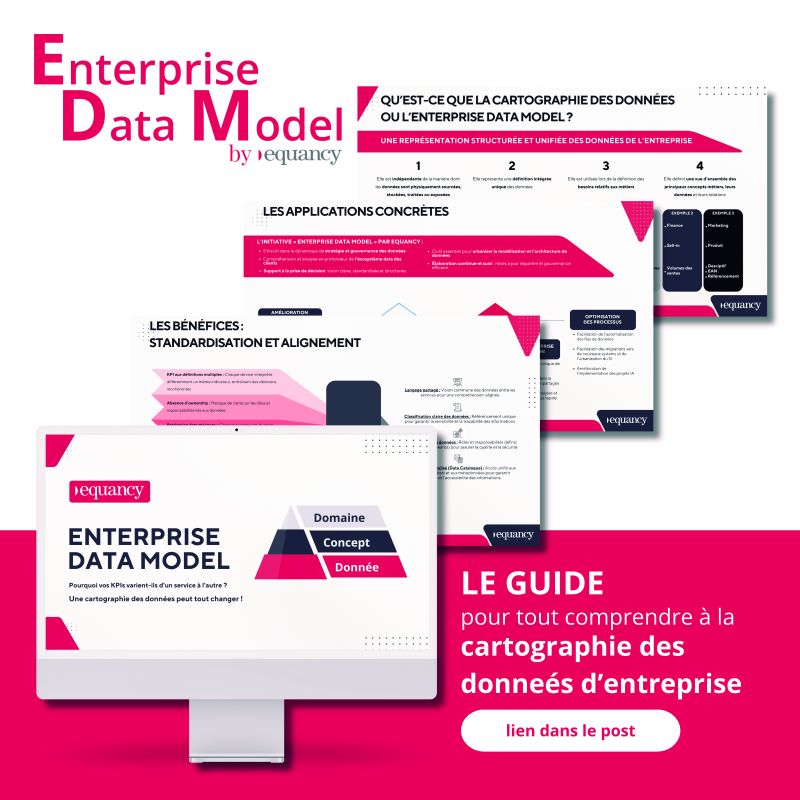[Tribune] The 5 ages of customer maturity
2019: 62% of customers feel they are treated like numbers and not people. 2021: 67% of French executives say their company will change the way it engages and interacts with its customers. In the meantime, confinement and social (and commercial ...) distancing have gone through this. This crisis has above all served as a revealer. 1st revelation: the ability to get in touch with customers is a tremendous lever for resilience and growth. 2nd revelation: being in a relationship is no longer enough. To make a difference, the entire company must be customer-oriented, focused, obsessed! In fact, "customer-centricity" is no longer defined as process optimization, the creation of a "customer experience" department or investments in favor of customer programs, it is a change of reference. A new repository where all dimensions of the company (network, digital, product, supply chain, human resources ...) are concerned: a real cultural transformation! However, if many companies claim this customer orientation, very few execute it ... It is only once decreed, that the customer orientation is carried out. For this, it is essential to define and set up a "customer trajectory" pursuing 5 ages of maturity with, at each age, a very precise objective, organization and characteristics.
Age 1: INTEREST, or how to solve customer irritants with quick-wins
The genesis of customer orientation often begins with an awareness of the importance of the customer within the company through the over-solicitation of customer service or the systematic and massive escalation of a customer irritant ( incomprehensible expectation, need to re-explain its problem on several channels or different interlocutors, lack of consideration of its customer "status" ...) At this stage, the company seeks to reduce complaints, "erase the irritants" and silence the dissatisfaction. The company is here in a "problem-solver" posture. It implements reactive - and often symbolic - actions to improve satisfaction, reduce attrition or boost customer engagement.
We are thinking here of the "Blue Line" set up in Carrefour supermarkets.
1 ° / Time 1, detection of an irritant: the long waiting time before reaching the checkout staff (30% of customers give up a purchase because of a long wait at the checkout4).
2 ° / Time 2, search for a solution: open other checkouts to make the queue more fluid.
3 ° / Stage 3, media coverage of the solution: create an advertising spot "the blue line" to promote the consideration of customer well-being in Carrefour supermarkets.
Age 2: THE INVESTMENT, or how to set up a "client project" to solve a problem or seize an opportunity for engagement
This age is when the company invests in human and financial resources to set up customer programs. Unlike the previous age, there is a position taken within the company thanks to a dedicated organization and associated means. The company then sets out to define and design a new customer experience, to design a new customer program or to build (or redesign) its loyalty program. For this age, let's take the example of Look Voyages which has set up a real satisfaction management program. The starting point ? A simple observation, customers who go through customer service after their stay (complaint, claim, request for compensation, etc.) have a higher repurchase rate than customers who do not go through customer service. Recipe ? Listening and customer consideration. By setting up a systematic program to process and respond to customer complaints, the repurchase rate of customers "a priori dissatisfied" has been multiplied by 2 compared to customers who do not contact customer service5.
Age 3: INVOLVEMENT, or how to redefine internal processes towards more customer centricity.
This time, the company fully integrates this new approach and is no longer satisfied with isolated devices or actions as in age 1 and 2. This is the appearance of customer transformation programs. Transversal, they break down silos, build bridges in the organization, aggregate the data available at key stages of the customer journey, monitor the "voice of the customer", manage the correlations between satisfaction and Customer Life Time Value. The company's employees are involved and integrated into the customer ambition. For example, at Carrefour, where the checkout teams report comments and verbatim from customers they hear, or the fact that managers and also the CEO see their bonuses dependent on the customer satisfaction rate7.
Thus, we are no longer, simply, in problem solving but in a redefinition of the internal processes of the company: "I invite you to disobey from the moment it is for the customer8" as it is so well said the former CEO of Leroy Merlin. Obviously, this step involves raising awareness and acculturation of employees via training programs "in the sense of the customer" as at Picard where, at the end of the new Picard & Moi loyalty program, the teams were trained in the new relational posture and new customer-oriented KPIs. Result: 1 year after the launch of its loyalty program, the leader in frozen foods confirms its preferred brand position for the French and is still gaining points in the YouGov barometer of retail brands.
Age 4: COMMITMENT, or how to build your business strategy around the customer
The customer becomes "essential" for the company. He leads the discussions, he questions, he co-constructs. The values of the company are part of societal trends and guide the strategic developments of the company. If the age of redefining processes is still (and more than ever) relevant today, this age is enriched by radically new experiences, in line with the values and causes that mobilize customers and which sometimes impact orientations. business operations. Patagonia, with its eco-citizen initiatives, perfectly illustrates this desire to share its commitments with those of its customers thanks to its initiatives such as "1% for the Planet" where several companies devote 1% of their turnover to preservation. of the environment, or even "wear worn" which makes it possible to restore and / or recycle the used clothes of customers. At this stage, the client project is supported by all employees and no longer just by the management committee. The strategy impacts the very culture of the company. Fnac Darty recently announced that it planned to "sell fewer new products and offset this drop in revenue by selling subscription services9". Once again, the company's commitments are transparent and publicized to reflect new customer expectations and better engage them. Key figure for this dynamic: 7 out of 10 French people think that companies, brands and distributors have a role to play on social issues.
Age 5: INCLUSION, or how to involve the customer in the cultural transformation of the company
At the highest level of maturity is inclusion, this age when co-creation irrigates the company's offer, service and innovation strategies. Here, the customer is an integral part of the organization. Here, we easily think of Michel & Augustin who are looking for the ultimate connivance with its customers or Decathlon ready to remove from its shelves products that receive a satisfaction rating of less than 4. Club Med, long bearer of the mantra "Happy GO make Happy GM "today invites its customers to" Open CODIR ", and in its ambition to promote" the economy of consideration ", seems to tell us that now" Happy GM make Happy GO ". Finally, let us mention the e-merchant Zappos whose raison d'être "Bringing happiness to the customer" could inspire many champions of customer centricity. To ensure that its employees stay with Zappos for good reasons (to have fun at work, to provide solutions and fun to customers ...) and not for bad reasons (to earn more ...) the company offers a check of $ 2000, at the end of the onboarding process for new recruits, to those who decide to leave the company. Objective: to ensure that only happy and motivated employees can join the company. Thus carried and promoted by each employee, customer culture becomes an asset of the company.
In short, customer centricity is not, above all no longer, a mantra. It is a trajectory that pursues 5 ages of maturity, which affects all elements of the company's value chain: its offer, its services, its distribution model, its organization, its strategic orientations. Realizing that "The only boss is the customer" means transforming these elements of the value chain one by one with "customer use cases" which, every day, will feed the strategy and the customer obsession. And, you, what is your age of maturity as a customer?
Bertrand Destailleur
Associate Customer Experience




